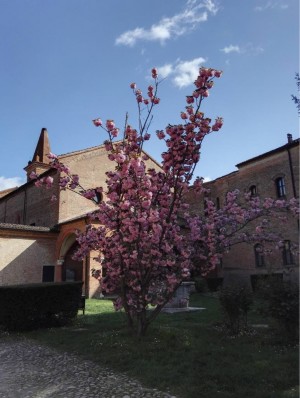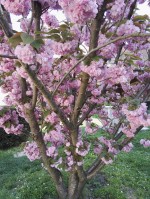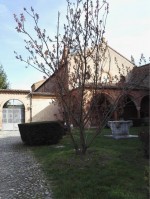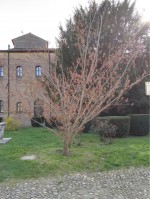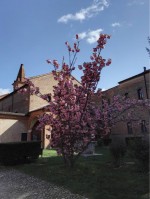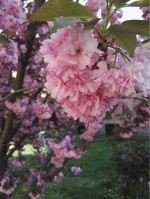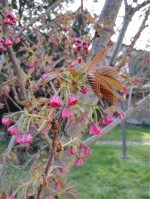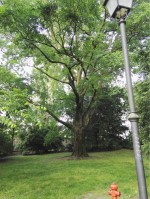Cherry tree of the Sant'Antonio in Polesine monastery
The ancient Japanese cherry tree has flowered for many years in the cloisters of the Sant’Antonio in Polesine monastery, providing a wonderful spectacle each spring.
The Monastery's Cherry Tree
In the courtyard of the Sant’ Antonio in Polesine monastery, in spring, you can enjoy the wonderful blossoming of a Japanese cherry tree (Prunus serrulata Lindl.): the current example, planted in 2011, is the descendent of a majestic tree which, despite the care afforded it, completed its life cycle just a few months earlier, having inundated the monastery's courtyard with its pink splendour for decades.
There is the almond,
the tree which flowers
just a few days
and then sheds its colour
for its fruit,
like all mortal loves.
There is the fig,
tree which never flowers,
but fruits immediately,
like the mother of God.
There is the Japanese cherry,
tree which barely knows fruit at all, only blossom,
like the love of God.
The Japanese Cherry by Roberto Pazzi (1)
Characteristics of the Tree
The Japanese Cherry, Prunus Serrulata, is an ornamental plant of the Rosacee family, common in Japan and introduced to the West, featuring a vase-shaped form with expanded, arching branches which can reach 10 metres in height.
It is a tree which is widely appreciated for its characteristics, such as the quantity and colour of its blossom – ranging from white to dark pink – which comes out between the dark, interwoven branches with the arrival of spring. The flowering Japanese cherry trees, which represent a distinct group, possibly derive from the indigenous species P. speciosa and P. serrulata. Over 40 varieties have been described, with var. amanogawa, var. kanza, var. Shiro Fugen, and var. shirotae very common in Italy. (2)
The tree in the monastery, of the species known as serrulata due to the ovate shape of its leaves, is a small tree with an expansive crown formed of curved, interwoven branches which take on the mahogany colour of the bark. The flowers form in clusters with horizontal pink petals and come out in early spring, creating a wonderful spectacle whose charms no one can resist.
Note
- Poesia di Pazzi, Roberto Ciliegio Giapponese, in Lorenzetti, Marco (a cura di), Vecchi amici: grandi alberi a Ferrara, Corbo Editore, 1996, pp. 30-31.
- Azienda regionale delle foreste dell’Emilia-Romagna, Alberi e arbusti dell'Emilia-Romagna, pp 156
Bibliography
Fototeca
Related Themes
Compiling entity
- Museo Civico di Storia Naturale di Ferrara

